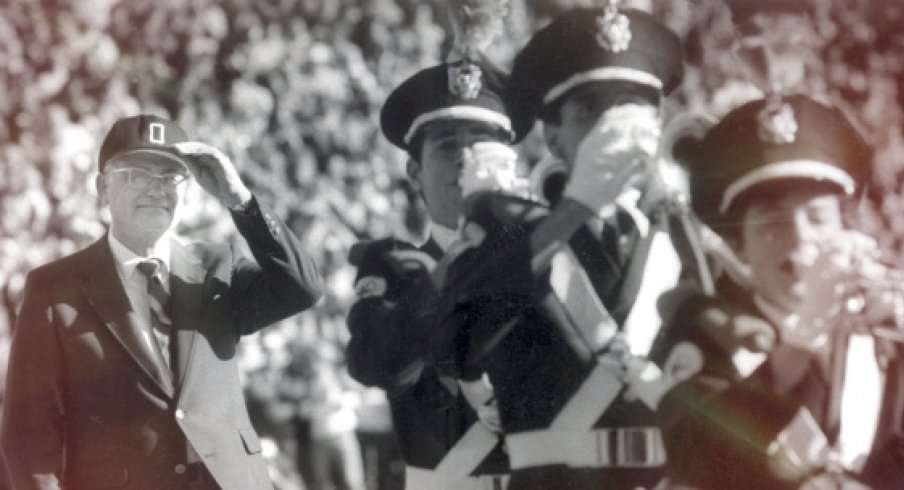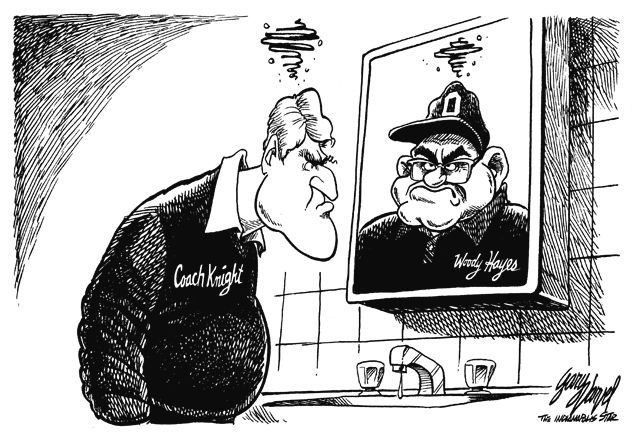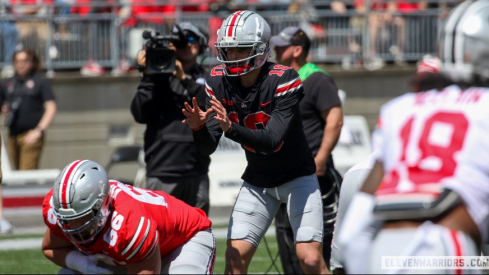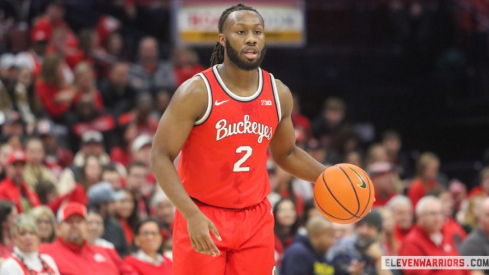How do you want to be remembered?
Woody Hayes was asked that question in the final year of his life, understanding that perception has a stubborn tendency of lingering despite seismic shifts to reality. Those resplendent and turbulent Ohio State Saturdays with him on the sidelines would always overshadow the now.
His final years took place in relative darkness or in front of a few curious cameras. Live television and high stakes were in his past. Changing and aging were of little consequence to the larger perception. That was baked and set for eternity after the games were finished being played.
By 1986 the larger-than-life football coach, eight years removed from college football, barely resembled his notorious sideline persona. Woody was a reconciliatory and empathetic old man.

For 28 years he had been Ohio State's football tyrant. Woody was originally Plan B in 1951 after Don Faurot got skittish and chose to remain at Missouri. The locals wanted him fired numerous times both early and during what would become the middle of his tenure for failing to win enough. That's what happens to Ohio State coaches, eventually.
But then the late 1960s happened, and he was cemented as transformational to Ohio State football. Paul Brown with a red-hot temper; a national icon. He became Buckeye football.
Woody was foul-mouthed. He loved both history and psychology. His Ohio State teams schemed fewer than eight plays a game - which any average football coach could fully prepare for - and then resoundingly fail to stop on Saturday.
He routinely punched himself during practices to get players' attention. He punched a cameraman on live television. And then he punched Charlie Bauman.
That final punch was more than a pink slip; it was supposed to be an epitaph. Eight football seasons later without him on any sideline, he was growing increasingly frail and would be gone in under a year. How did Woody want to be remembered?
"I'd like to be respected for my integrity," he says as he clutches the arms on his chair. "And respected for the interest in the people whom I coached. And I try to be a good American citizen."
Outside of Ohio, Woody basically disappeared once the Buckeyes lost that Gator Bowl and that epitaph was written. But in Ohio and in reality, he quickly traded in his Coach's Show and replaced it with a hosting gig for a war history program on PBS.
He approached Ohio State - which had rightfully relieved him of coaching duties - and went back into teaching. His classrooms were always full. When he wasn't on campus he would go on the lecture circuit, speaking to alumni groups, interest groups and even on behalf of Bo Schembechler just hours before he died.
The man who could not contain his emotions as a football coach failed to control them in a completely different way upon being asked to deliver the commencement at the school that had fired him:
He died three months after that commencement speech.
His posthumous gift to the university created the endowment for the Woody Hayes Chair in National Security Studies at Ohio State. Eight months after his death the WHAC was dedicated in his honor. Today, Buckeye football begins and ends in the building named for him.
It's a lifetime removed from his final night on a sideline. After he was fired, Woody found the grace to exit coaching - and eventually his life - on the right side of humanity. As a result he and Ohio State will coexist on the best terms for eternity.
He made his reputation. He ended his career. And ultimately he made it right again.
Enter Knight
How do you want to be remembered?
The two men knew each other well. Hayes was coaching the football Buckeyes while Knight was (barely) playing for basketball ones. Parallels have been laid out for decades; two native Ohioans from small towns whose paths crossed in Columbus and both went on to have Hall of Fame careers littered with championships and iconic moments of their respective sports, both triumphant and tragic.
Stubborn. Gruff. Temperamental. Terminated, for putting their hands on a college student after careers spotted with physical brush-ups. It turned out the moment Knight was fired was when the career arc and personality parallels with Woody ended, but few have cared or noticed (though Knight was objectively worse with the whole physical part).
Gary Varvel's Indianapolis Star cartoon above was drawn 15 years after Woody died. Perception has a stubborn tendency of lingering despite how he spent his final nine years. You remember both coaches in triumph and defeat, but always under the spotlight's unforgiving glare.
Woody got himself fired on live national television. Knight earned his termination under a Zero Tolerance mandate in the mostly-empty corridors of Assembly Hall during student football ticket pickup. Both were larger than life and tracked constantly while at their respective schools. Both had cameras trained on them during games to capture the show inside the show.
As a result IU's benches were deliberately situated on the wrong side of court during Knight's tenure. That's why the footage of him famously throwing a chair onto the court is from behind, not facing him as it would have been anywhere else. The primary television camera's position captured fewer of his tantrums that way (you have to admit moving the benches was far more elegant than, say, punching the cameraman).
How do you want to be remembered? Knight provided an unsolicited request for his burial before a full house on Senior Night at Assembly Hall while he was still on Indiana's payroll:
"(Knight) is in a race now between overcoming immaturity and disaster.”
That's renown Duke University professor Edwin Cady, who has been dead for 13 years. Cady said that about Knight back in 1971 when the IU athletics committee he chaired first recommended hiring him away from Army to come to Bloomington.
The race Cady referred to ended long ago, and Knight never showed any interest in winning it - either while coaching or ever since. Perhaps the greatest irony in how he has handled his legacy at Indiana, which obviously did not end on his own terms, is how he views his Ohio State playing career which concluded with two losses in national championship games - also not exactly how he would have chosen to leave Columbus, either:
If you're going to let a loss determine the outcome of your life, you've got a lot of problems.
Knight has allowed his bitterness over Indiana to undermine his legacy further and cement his eulogy. Openly wishing on live air that the people who helped facilitate his termination were all dead is an impossible U-Turn, not that he will ever second-guess himself. Woody was never that stubborn. If anything, he stayed curious until he died.
The passage of time only helped Woody rehabilitate his relationship with Ohio State and his image with Buckeye fans. Knight exited Bloomington 17 years ago this September, over twice the amount of time Hayes had after coaching.
Woody is still larger than life in 2017, three full decades after his passing. He may be gone but he hasn't been allowed to die, and the most overlooked part of how in the hell that happened was how he transformed following his exit from coaching.
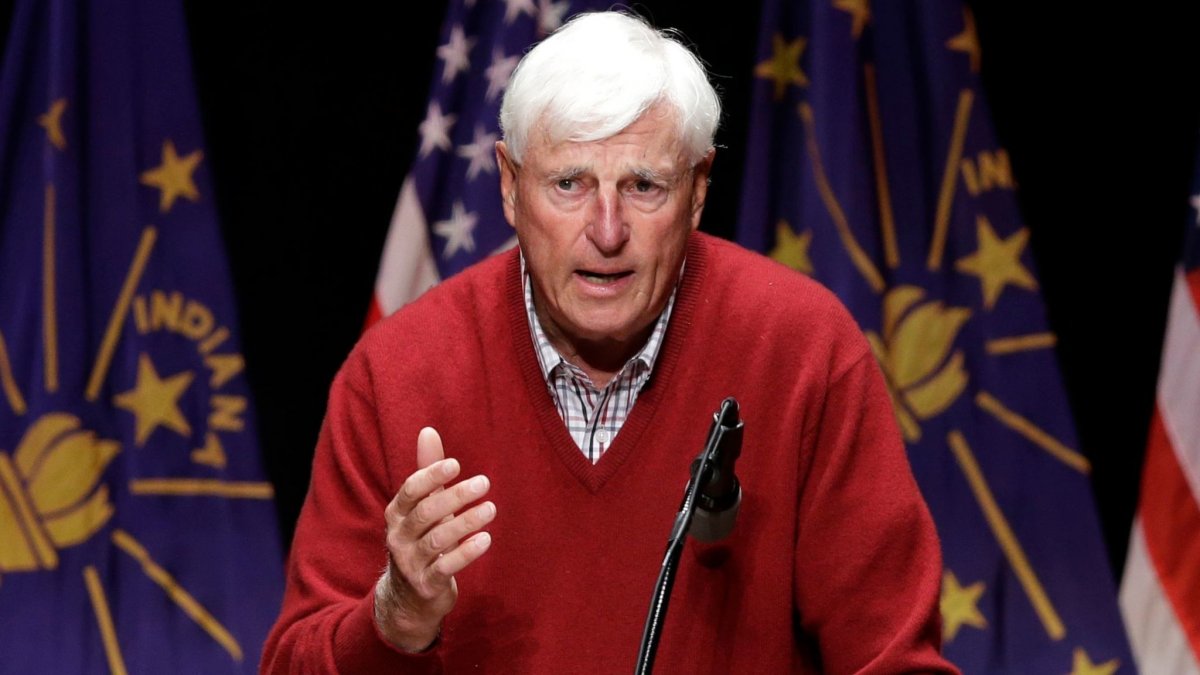
Knight, on the other hand, will eventually pass away quietly with the requisite media boilerplate eulogies and highlight packages. Copious sound bytes and lowlights will be included too, as with Hayes, but the General will have a full complement of them that came away from the basketball court. He will not find that grace or empathy. Knight rejected both despite numerous opportunities to reconcile, from Cady's statement to his recent death wishes.
One of the greatest coaches and most fascinating sports figures in history (as well as the greatest basketball instructor I've personally ever had) will not have had to go out the way he undoubtedly will, and that is what separates Woody from Knight. The ways they started and finished may have had striking parallels, but their lives beyond coaching could not be more different.
Woody's burial wish created that endowment at Ohio State. Knight's was to be buried upside down. It's just unlikely any of his critics will bother puckering up at his grave.
Please help Eleven Warriors build a life-size statue of Woody Hayes in his hometown of Newcomerstown, OH.
